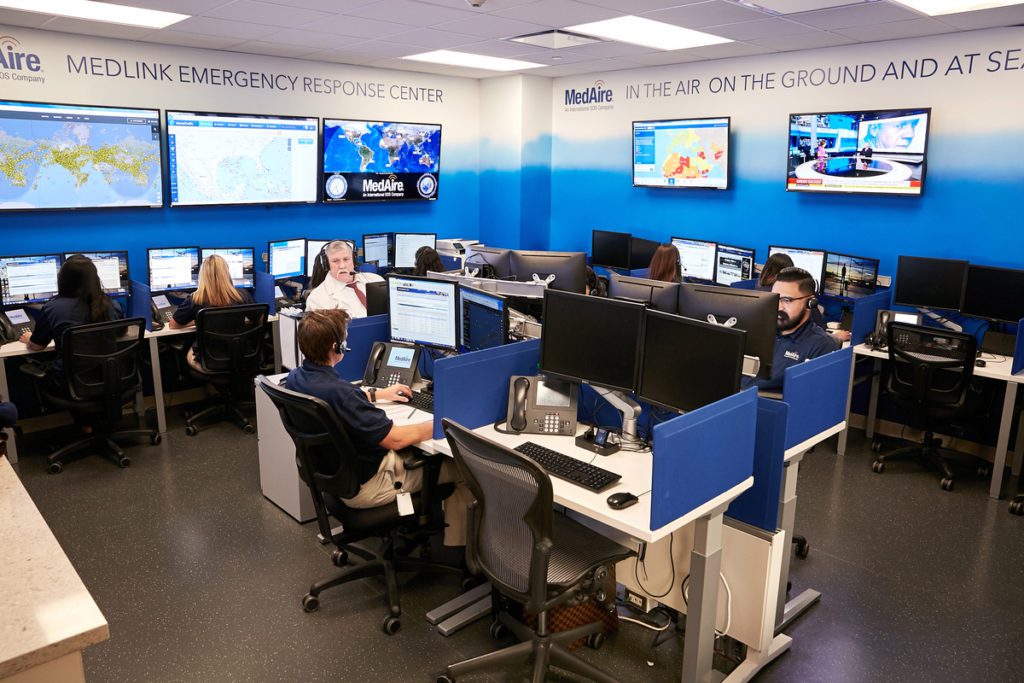How Do You Call 911 From 30,000 Feet in the Air?
From nondescript offices across the country, doctors stand by to offer emergency help for in-flight medical events
By Matt Neistein
Published October 14, 2019
Read Time: 5 mins
Is there a doctor on board?
It’s a well-worn cliché, but also a very real request made thousands of times a year aboard commercial flights in the U.S. Medical emergencies 30,000 feet in the air galvanize both flight crews and passengers, who may encounter life-threatening situations with no hospital in sight.
Most in-flight medical situations are not that serious. Nausea and lightheadedness are among the most common reasons for a person to seek help, according to Dr. Christian Martin-Gill, an associate professor of emergency medicine at University of Pittsburgh Medical Center. Those events are usually handled by flight crews trained to assist passengers in distress with items typically found in a first aid kit.
“The vast majority of in-flight medical emergencies are able to be managed with the medical equipment and capabilities that are available on aircraft,” he said, often with the assistance of ground-based medical support specialists.
UPMC’s STAT-MD service is one of those medical support networks. About a dozen STAT-MD physicians are available 24 hours a day year-round to field calls from commercial pilots seeking help to manage medical emergencies aboard their aircraft.
Those physicians operate out of an office in Pittsburgh’s Oakland neighborhood filled with computers, phones, manuals and other materials that help them diagnose and treat patients they’ve never met who may be in a different time zone.
Martin-Gill, who also serves as the medical command physician for STAT-MD, said the doctors who work for the service are specially trained to handle emergencies that can’t be immediately addressed at a medical facility. They are board-certified in emergency medical services and emergency medicine.
“We specialize in the care of patients outside of the hospital, which largely involves overseeing both ground and air EMS systems,” he said.

From an office in Pittsburgh, STAD-MD doctors stand by to offer emergency help for in-flight medical events. (Photo by Beth Hollerich)
Remote diagnosis
The idea for STAT-MD was born out of the role physicians have long played for ambulance paramedics, firefighters and other emergency medical personnel, who often will call into a hospital for assistance as they’re treating patients. UPMC created a center to specifically handle those types of calls, and then realized that flight attendants and pilots up in the air needed that service as well.
Now STAT-MD contracts with commercial airlines to provide on-call medical advice, although those partners and contracts are kept confidential.
“It’s definitely a unique experience, and it requires a unique set of skills to be able to provide guidance for a medical emergency that’s happening literally thousands of miles away, could be happening across the world,” Martin-Gill said. The doctors know how to gather information that “may be limited with the capabilities of equipment and knowledge aboard that aircraft, and how to handle specific emergencies that tend to surface on those aircraft.”
Phoenix-based MedAire is another ground-based medical support network that contracts with more than 150 airlines worldwide to help flight crews in the middle of a flight, and also when they’re on duty away from home and feeling ill themselves.
MedAire managed about 42,000 in-flight medical events last year – more than 100 cases per day, said spokeswoman Erin Mitchell.
The MedAire nurses and doctors are required to be licensed providers with at least three years of emergency medicine or ICU experience, Mitchell said. They take a 12-week induction medical training course that includes aerospace physiology and crew support.
The FAA mandates that certain types of medical equipment must be aboard all commercial flights, such as defibrillators, epinephrine, inhalers and more. But airlines supplement that equipment in different ways, and doctors with STAT-MD and MedAire are aware of what’s available on each aircraft, helping them to speed up diagnosis and treatment.
In 2001, MedAire founder Joan Sullivan Garrett, who worked as a critical-care flight nurse before starting her company, testified before a congressional committee about the importance of automated external defibrillators on planes. Her testimony is credited with convincing the FAA to mandate that equipment on all commercial flights.
The FAA also requires flight crews to be trained to address in-flight medical events. And while most of the time they don’t need assistance, serious situations will prompt that well-known request for a doctor. If there is no doctor onboard, the crews will ask for anyone on the plane with medical training.
(The “Good Samaritan” provision of the Aviation Medical Assistance Act protects airlines and passengers who volunteer to help in medical emergencies from being held liable for what happens to an ill passenger.)
“Southwest flight attendants are well-trained to respond to a variety of situations that might occur onboard our aircraft,” said Southwest Airlines spokesman Brian Parrish, noting that the company also contracts with a ground-based medical service.
Southwest planes carry first aid supplies and an emergency medical kit, as well as automatic external defibrillators, he said.
Treat or divert?
But when additional help is needed, pilots will call a dispatch center to connect with STAT-MD, MedAire or similar services.
The doctors on the ground gather information by using a standardized form or asking questions of the crew and any others volunteering to help, Martin-Gill said.
Based on that information, the on-call physician will advise the pilot and crew on how to proceed. And while the most extreme of emergencies may require immediate intervention, the decision to divert a flight to get a patient to a hospital is left to the pilot, not the physician.
If a pilot makes a decision to divert the flight, MedAire can tap into its database of more than 9,000 medical facilities near airports around the world, said Mitchell, the MedAire spokeswoman. That way, she said, “MedAire can advise pilots as to which option has the most appropriate medical facility to support the medical concern.”
Diversions occur on less than 10 percent of the calls STAT-MD gets, Martin-Gill said. But sometimes, landing is just not possible.
“What can sometimes be the most challenging is handling a serious medical emergency where there is no diversion option,” he said. “Certainly it’s a very challenging situation to have when you realize you’re three to four hours away from your closest hospital, and how can you manage that situation.”
Martin-Gill said he once received a call about a passenger on a flight from Europe to the U.S. whose implanted defibrillator had gone off six times over several hours before doctors were called. Given the plane’s location over the Atlantic Ocean, getting him to a doctor was not immediately possible.
Working in concert with the flight crew and a nurse on the flight, Martin-Gill said they got the man stabilized until the flight could ultimately divert, and the patient ended up being OK.







